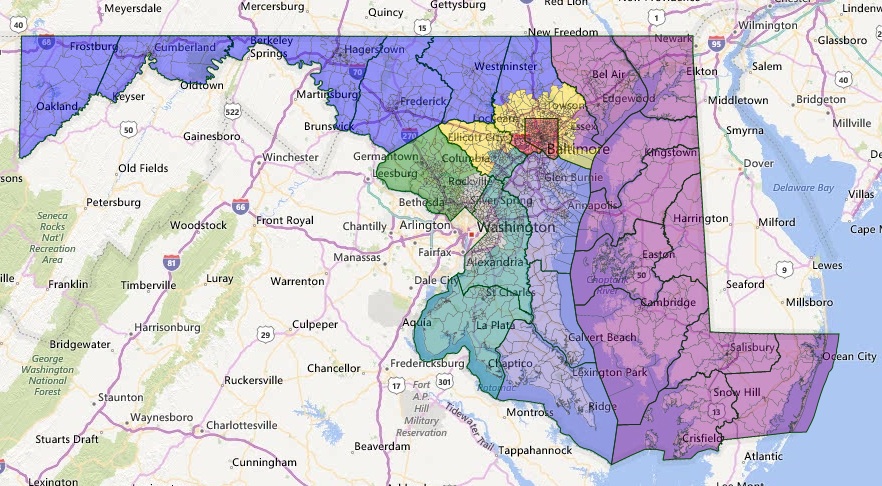 The Governor’s Redistricting Reform Commission has hashed out a set of recommendations for redistricting reform. No doubt Common Cause, the Washington Post, and Gov. Larry Hogan will hail them as major progress toward a fairer redistricting process.
The Governor’s Redistricting Reform Commission has hashed out a set of recommendations for redistricting reform. No doubt Common Cause, the Washington Post, and Gov. Larry Hogan will hail them as major progress toward a fairer redistricting process.
I look forward to reading the detailed, final recommendations but, based on reports in the media, the Democrats would be committing political malpractice to accept them.
According to Maryland Reporter, “The commission will recommend that any new independent commission apply current state standards for legislative districts to congressional redistricting.” As they note, current requirements for state legislative districts include:
- Equal populations
- Adherence to the Voting Rights Act
- Contiguity and compactness
- Minimize disruption of political subdivisions.
Congressional plans already have to adhere to the first two requirements as well as create contiguous districts. Compactness and minimizing the disruption of political boundaries would be new. Both would likely hurt Democrats, particularly the command to minimize disruption of political subdivisions.
Consider the above map, which I drew quickly as a plan that might comply with the Commission’s recommendations. The districts are about equal in population and it still contains two districts in which blacks form a majority of the voting-age population.
Due to Maryland’s geography and the need to minimize disruption of County boundaries, it is a virtual certainty that Republican districts would have to be drawn in both Western Maryland and the Eastern Shore.
Unsurprisingly, as indicated in the table below, both would be safe Republican territory. President Obama won just 41% of the vote in each of them in 2012. That one change alone would take the current delegation from 7-1 Democratic to 6-2 Democratic.
 Democrats are highly concentrated in certain portions of Maryland. That fact combined with the requirement to minimize crossing county and municipal boundaries would make more likely the inclusion of yet a third Republican district. In this plan, the Eighth District (Anne Arundel, Calvert, and St. Mary’s County) would favor Republicans, as President Obama won only 47% of the vote there.
Democrats are highly concentrated in certain portions of Maryland. That fact combined with the requirement to minimize crossing county and municipal boundaries would make more likely the inclusion of yet a third Republican district. In this plan, the Eighth District (Anne Arundel, Calvert, and St. Mary’s County) would favor Republicans, as President Obama won only 47% of the vote there.
This would take the overall delegation from 7-1 to 5-3–a real victory for Republicans. No doubt advocates for redistricting reform will say that this is very fair, as this would more closely match the partisan division of the state.
Except that parties usually receive a significant bonus in seats when they have as solid an advantage as the Democrats do in Maryland. The current plan has very erose boundaries. But the results are not unusual for states where one party is highly dominant at the federal level, as Massachusetts, Oklahoma and Utah demonstrate.
Democrats might try to force the creation of at least six Democratic districts. However, Republicans would be sure to sue if they could produce a plan that violated fewer county and municipal boundaries while complying with other provisions.
Unilateral Disarmament?
In 2010, Maryland was one of the few states in which Democrats controlled redistricting. Unquestionably, Maryland’s lines squirm around the State–more for incumbency protection than necessary for partisan reasons.
Republicans, however, have zero problem drawing odd lines or using their power to advantage their party when they control the process. In 2012, Democrats won a majority of the U.S. House vote in North Carolina but only won 3 of 13 congressional districts.
If Gov. Hogan could bring the gospel of redistricting reform to more large Republican states, it would be easier for Maryland Democrats to follow. Right now, it is hard to imagine why the Democrats would assent to a reform that assures Republican gains–possibly as many as if they got to draw the lines.
